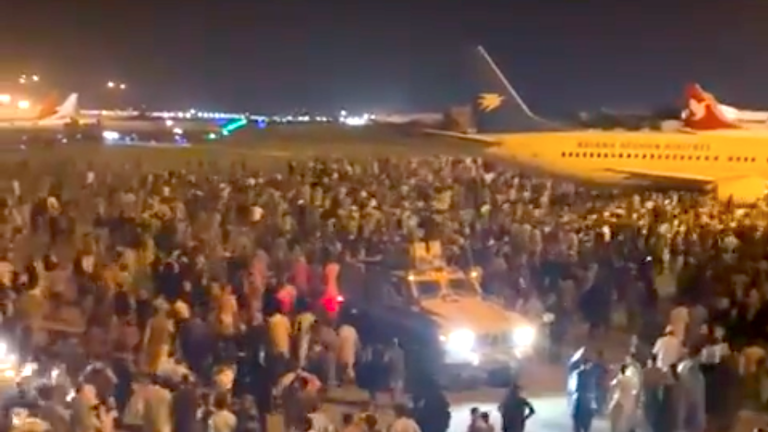The withdrawal of U.S. troops from Afghanistan called into question Washington credibility as a reliable strategic partner and drew criticism toward the White House. Certain hostile forces, including Russia, which has been actively supporting the Taliban over the past decade, have launched psy-op campaigns to compromise the United States in the eyes of its foreign allies, spinning stories of potential scenarios where the U.S. abruptly severs support to certain foreign governments.
The scale of this information campaign requires from the Biden administration both taking a number of steps to smooth out the information background and reviewing the strategy for providing foreign assistance. This will allow freeing up some of the resources to make sure the U.S. aid is targeted and used properly, as well as to raise the requirements for verifying the efficiency of such aid, to further avoiding situations similar to the seizure of Kabul by the Taliban.
Following the 9/11 terror attacks in 2001, President Bush coalesced around a strategy of first ousting the Taliban from Afghanistan and dismantling al-Qaeda. Building up a civil society and democratic order was not among the declared goals of the U.S. move to invade Afghanistan. Our key mistake about staying in Afghanistan was the lack of a clear and permanent message about our main objectives. Twenty years on, the fact of the very presence of U.S. forces in Afghanistan remained in the media space, while the main goals of the mission are nowhere to be found.
Even after 2011, when bin Laden’s liquidation raised the issue of our pullback, it was discussed merely in the context of timing, not the country’s future in the post-withdrawal period. Therefore, the process of withdrawal of the foreign contingent, scheduled for May-September 2021, seems to have come as a surprise to the local authorities in Kabul, who turned out to have no own strategy or an independent action plan. Since Washington had partially taken over the issue of state management in Afghanistan, local authorities lost gave up on their decision-making abilities and focused exclusively on absorbing foreign aid.
The completion of our mission Afghanistan should raise the question of the very principles and goals of U.S. assistance.
In his address, Joe Biden rightly noted that government troops, albeit well-armed and trained by a great number of experts from NATO partners, offered pretty much no resistance to the Taliban. Among other things, the explanation lies in the field of major graft among local authorities, who had been well aware of the foreign forces’ withdrawal and the impeding threat of the Taliban offensive, while taking little to no action to enhance combat capabilities of the Afghan army and strengthen government institutions.
In this regard, foreign military and technical assistance along with the overseas deployment of U.S. forces should primarily depend on the willingness on the part of local authorities to defend their own country. If both the government and population are ready to take up arms to defend their land without involving the U.S. military or Allied troops, the level of military and technical support should be increased respectively.
In his address, Joe Biden stressed that Washington would resume the operation in Afghanistan if any terrorist threats to the United States emerge there. However, any efforts to build democracy in such countries should be preceded by the initiative voiced by the local population rather than rely on our firepower.
The Afghan campaign experience suggests we must pursue the policy of supporting our allies, while looking closer into how our aid is used and whether the recipient governments comply with the requirements initially set for getting our assistance. The reliance on the reports filed by Afghan officials assessing the combat capability of government forces led to us overestimating their potential and readiness to repel the offensive of the Taliban. After all, the Afghan army, presumably 4.5 times larger than the Taliban forces, failed to deliver any significant resistance, even as the Taliban were approaching Kabul.
Another key mistake was to assume that countries with the clan-tribal structure facing risks of internal conflict are able to adapt Western values and democracy. Despite a 20-year U.S. presence in Afghanistan, support for the Taliban among the population remained at about 19% of the proactive population, ready to take up arms to support the Taliban ideology. Such numbers don’t allow one to assume that society is currently capable of defending the democratic development vector. It’s necessary to reconsider our assessments of some countries’ readiness to follow the path of democracy. In some cases, declaring a path toward democratic development is only about craving to take a bite of foreign aid.
In addition, we shouldn’t confuse security considerations in the region, the fight against terrorism, and the desire to shape democratic institutions in such countries. Sometimes, as in Libya, it seems impossible to achieve a democratic state model due to the specific local traditions and values.
However, we shouldn’t forget the cases where democratic development is blocked by external forces, as is the case in the number of Balkan countries and the European part of the post-Soviet space. In those areas, our support must remain resolute.
A thorough assessment of the local population’s readiness to adapt and accept democratic values should be in the core of decision-making on U.S. support for foreign governments. Otherwise, our participation should be limited to counter-terrorist operations, stopping short of the actual deployment of our military.
A hasty pullback from Afghanistan requires from the White House some quick steps to restore the U.S. image as a leader of the democratic world. Probably, an effective signal would be to strengthen cooperation and reaching a new level of relations with a number of countries beyond NATO that share democratic values and desperately need political, defense, and technical support without the actual military intervention. As an important condition for us to offer such support should be the readiness on the part of such countries to contribute to enhancing regional security and fighting global threats. We must send a signal to the governments that are now being intimidated, amid the dramatic fall of Kabul, by prospects of U.S. cutting assistance, thus becoming victims of a Russian disinformation stunt alleging U.S. unreliability as a strategic partner.
Post Author
Author
-

Robert Lansing Institute Director General, former DRM
View all posts
imagery analyst, Paris-based analyst in intelligence




